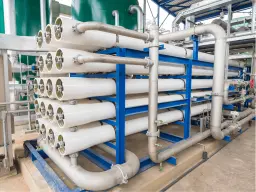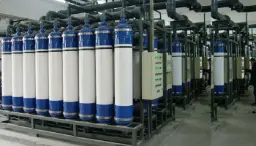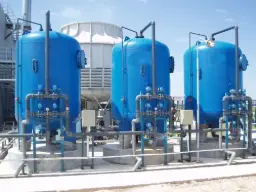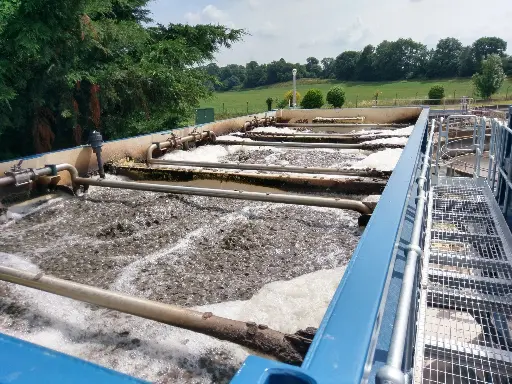Biological Treatment for Textile Industry Organic Contaminants
The phrase “Biological Treatment for Organic Contaminants” describes a family of engineered processes that exploit naturally occurring or specially selected microorganisms to metabolise, adsorb, or transform dissolved and particulate organic pollutants in water and wastewater streams. Engineers harness aerobic, anoxic, and anaerobic metabolic pathways to break complex molecules into simpler, less harmful compounds such as carbon dioxide, water, methane, and biomass. In industrial plants the objective is not merely to lower regulatory metrics like chemical oxygen demand (COD) and biochemical oxygen demand (BOD) but also to stabilise effluent quality so downstream polishing steps—ultrafiltration, reverse osmosis, ion exchange—work efficiently. The biology must coexist with fluctuating temperatures, feed loads, salinity spikes, cleaning chemicals, and occasional toxic shocks, so robust design margins and digital monitoring are essential.
Biological reactors have evolved from simple aerated lagoons to compact high-rate membrane bioreactors that deliver five-to-tenfold higher loading rates. Advances in carrier media, diffusion aeration, and real-time nutrient dosing have slashed energy consumption per kilogram of COD removed. Meanwhile, digitisation—cloud-connected sensors, machine-learning process controls, and predictive maintenance—has transformed operations from reactive to proactive. Sustainability drivers push plants to balance effluent compliance with greenhouse-gas reduction, sludge minimisation, and water reuse, making biological treatment the cornerstone of circular-economy water strategies. Because organic contaminants often coexist with trace xenobiotics, integrating biological and advanced oxidation processes can produce synergies that exceed either technology’s single-pass performance. This overview sets the stage for a deep dive into system choices, monitoring, design, and life-cycle operation.
Water Treatment Systems Used for Biological Treatment
The choice of unit operations in a Biological Treatment for Organic Contaminants train depends on influent composition, effluent limits, footprint, and energy strategy. Engineers always front-load hydraulic equalisation and fine screening to protect downstream equipment, then deploy one or more bioreactor configurations tuned for aerobiosis, anoxia, or anaerobiosis. Nutrient balancing ensures microorganisms never run short of nitrogen or phosphorus, while pH control keeps enzymes active. Sludge handling, thickening, and dewatering cap the flow-sheet, often augmented by anaerobic digestion that recovers biogas for heaters or cogeneration. Emerging hybrid systems fuse fixed-film and suspended-growth modes to combine high reaction rates with process stability under load shocks.

Reverse Osmosis
Uses semipermeable membranes to remove dissolved impurities, ensuring high-purity water for boiler feed.

Ultrafiltration
Removes suspended solids and colloids as a pretreatment step, enhancing downstream performance.

MBR Systems
Combines an aerobic reactor with immersed or sidestream microfiltration/ultrafiltration membranes, producing near-ultrapure effluent and eliminating secondary clarifiers. MLSS levels reach 8–12 g/L, yielding a compact footprint.

MBBR Systems
Polyethylene carriers with high specific surface area move freely in the tank, supporting biofilms that tolerate hydraulic and organic shocks better than flocculant sludge. Aeration or mechanical mixing maintains carrier motion and oxygen supply.
These complementary systems cover a spectrum of loading rates, effluent targets, and energy footprints. Activated sludge remains the workhorse for municipal-type loads, while MBBR and IFAS step in for retrofit capacity upgrades. MBR excels when zero-liquid-discharge or high-purity recycle is mandatory. SBR provides scheduling flexibility for batch manufacturers, and UASB shines whenever influent COD surpasses 2 g L⁻¹ with energy-recovery ambitions. Selection often results in a hybrid flow-sheet—for example, anaerobic UASB followed by aerobic MBBR—to maximise total organic removal and minimise sludge-handling costs.
Key Water-Quality Parameters Monitored
Maintaining biological performance hinges on continuous or high-frequency monitoring of physical, chemical, and biological indicators. Operators track influent and effluent loads, in-process dissolved-oxygen gradients, nutrient ratios, and sludge settleability to anticipate upsets long before permit limits are threatened. Smart inline sensors feed data into supervisory control and data acquisition (SCADA) or cloud dashboards where algorithms calculate oxygen-transfer efficiency, food-to-microorganism ratios (F/M), and sludge age. Historical trend visualisation reveals seasonal patterns—temperature swings, holiday shutdowns, ingredient changes—that guide preventative adjustments. Cost-effective monitoring also reassures regulators and insurers that the plant fulfils due diligence, reducing compliance-related downtime.
A balanced scorecard approach pairs core compliance metrics like COD and total suspended solids (TSS) with process-health indicators such as oxidation-reduction potential (ORP) and mixed liquor volatile suspended solids (MLVSS). Where resonant sensors detect early-stage filamentous bulking, operators can tweak aeration mixing, polymer dosing, or nutrient ratios to restore settleability. Digital twin models ingest on-line data to predict MLSS growth and membrane fouling, allowing just-in-time chemical cleaning. Because energy accounts for up to 60 % of life-cycle cost in aerated systems, dissolved-oxygen targeting within a 0.1 mg L⁻¹ band reduces blower power without jeopardising oxidation.
| Parameter | Typical Range | Control Method |
|---|---|---|
| Chemical Oxygen Demand (COD) | < 50 mg L⁻¹ (effluent) | Modulate aeration rate and sludge age |
| Biochemical Oxygen Demand (BOD₅) | < 10 mg L⁻¹ (effluent) | Adjust F/M ratio, recycle flow |
| Dissolved Oxygen (DO) | 2 – 4 mg L⁻¹ (aerobic zone) | VFD-controlled blowers, fine-bubble diffusers |
| Mixed Liquor Suspended Solids (MLSS) | 2 – 4 g L⁻¹ (ASP) | Automated wasting pumps |
| pH | 6.5 – 8.5 | Alkali/acid dosing, CO₂ stripping |
| Oxidation-Reduction Potential (ORP) | –100 mV (anoxic) to +200 mV (aerobic) | Phase-timing adjustment, carbon augmentation |
| Total Nitrogen (TN) | < 10 mg L⁻¹ (effluent) | Carbon dosing, internal recycle optimisation |
Design & Implementation Considerations
Designing a biological treatment plant for organic contaminants starts with a rigorous mass-balance that converts hourly or daily organic loads into reactor volumes and aeration power. Engineers calculate hydraulic retention time (HRT), sludge retention time (SRT), oxygen-transfer efficiency (OTE), and nutrient supplementation based on stoichiometric demands for bacteria to synthesise new cells. Materials of construction—from concrete with sulphate-resistant admixtures to duplex stainless steel diffusers—must resist corrosion, abrasion, and microbiologically influenced deterioration. A well-documented piping and instrumentation diagram (P&ID) maps isolation valves, pressure gauges, flowmeters, and sample ports so that operators can isolate any section without shutting down the entire train.
International standards guide every stage. ISO 22000 influences hygiene for pharmaceutical wastewater, WHO Good Manufacturing Practice (GMP) shapes microbial limits, and NSF/ANSI 40 defines residential aerobic treatment unit performance. In many jurisdictions, membrane housing pressure vessels require ASME certification, while electrical panels demand IEC 61439 compliance. Automation strategy layers local PLC control with SCADA visualisation and optional distributed control system (DCS) redundancy for mission-critical plants. Lifecycle information management—digital asset tags, smart P&ID integration, and cloud-based maintenance logs—supports predictive analytics. Computational fluid dynamics (CFD) verifies mixing patterns, preventing dead zones that harbour filamentous bacteria.
After confirming design assumptions, engineers simulate performance under best-case, average, and worst-case loads, often using Monte Carlo methods to stress test oxygen delivery. Energy pinch analysis identifies heat pump or combined heat and power (CHP) integration points for anaerobic systems. Finally, constructability reviews align civil, mechanical, electrical, and automation contractors under Building Information Modelling (BIM) protocols, reducing clashes and rework.
Operation & Maintenance
Day-to-day excellence in Biological Treatment for Organic Contaminants depends on disciplined routines covering inspection, cleaning, calibration, and data review. Operators track sludge volume index (SVI) at least twice weekly to detect bulking or pin floc, then adjust wasting rates accordingly. Preventive maintenance schedules call for quarterly blower oil changes, annual diffuser membrane tension checks, and bi-annual vibration analysis for high-speed turbo blowers. In membrane bioreactors, chemical clean-in-place (CIP) with hypochlorite and citric acid alternate to remove organic and inorganic fouling, while permeability tracking determines CIP trigger points. Spare-parts strategies classify items into critical, essential, and consumable categories; critical spares—PLC CPU, blower motor, membrane cassettes—should reside on-site to avoid multi-week import delays.
Competent staffing blends microbiology, instrumentation, and mechanical skills. Training modules cover nutrient balancing, process upset recovery, and SCADA trending. Digital tools brighten the learning curve: augmented-reality headsets overlay valve names during lockout-tagout, and QR codes on pumps link to step-by-step video tutorials. Energy optimisation remains a daily target; aeration makes up more than half of the plant’s electricity bill, so operators re-baseline blower setpoints whenever influent load decreases. Quarterly KPI reviews benchmark sludge yield (kg dry solids kg⁻¹ COD removed) and greenhouse-gas intensity (kg CO₂-e m⁻³ effluent).
Challenges & Solutions
Despite their maturity, biological systems face recurring challenges. Scaling—mineral precipitation on diffusers or membranes—cuts oxygen transfer and flux; periodic citric-acid soaks or antiscalant dosing mitigates it. Bio-fouling in MBRs raises trans-membrane pressure (TMP); alternating aeration scours, back-pulsing, and low-dose oxidant cleanings keep TMP stable. Regulatory hurdles emerge when discharge limits tighten for nutrients or trace organics; incorporating post-denitrification filters or advanced oxidation closes the gap. Toxic shock loads from solvent spills can wipe out biomass; equalisation basins with online ORP alarms divert dangerous batches to side-tank neutralisation. Sludge disposal costs rise with tightening land-application rules; high-solids centrifuges and low-temperature belt dryers cut transport volume. Each issue has a mitigation hierarchy: monitor early, intervene gently, and retrofit unit operations only when soft measures fail.
Advantages & Disadvantages
A fair evaluation helps decision makers weigh biological treatment against physicochemical alternatives.
Biological methods excel in energy recovery opportunities, low chemical consumption, and high removal efficiencies for biodegradable organics. They also integrate seamlessly with nutrient removal and deliver sludge that, after stabilisation, may serve as soil conditioner. However, sensitivity to toxic compounds, the need for skilled operators, and potential odour emissions count as drawbacks. Membrane-based bioreactors add capital cost and membrane replacement expenses, while anaerobic reactors demand careful biogas safety management.
| Pros | Cons |
|---|---|
| Converts pollutants to innocuous end-products without large reagent doses | Vulnerable to toxic shocks and rapid load changes |
| Generates valuable biogas in anaerobic systems, reducing fossil fuel use | Requires skilled operators and continuous monitoring |
| Produces comparatively low sludge volume per kg COD removed | Odour control infrastructure may be necessary |
| Adaptable flow-sheets allow retrofits (IFAS, MBBR) in existing tanks | Membrane modules or carrier media add capital and O&M cost |
| Supports integrated nutrient removal, meeting future permit tightening | Seasonal temperature drops can slow kinetics, increasing HRT |
Frequently Asked Questions
Q1: How long does it take to start up a biological reactor for organic contaminant removal?
A: Conventional activated sludge typically reaches steady biomass within 3–6 weeks, while carrier-based MBBR can stabilise in 10–14 days because the high protected surface fosters rapid biofilm formation. Seed sludge from an existing plant shortens ramp-up further.
Q2: What is the typical sludge yield in aerobic treatment?
A: Expect 0.4–0.6 kg dry solids per kg COD removed under fully aerobic conditions. Optimised sludge age, nutrient balance, and temperature can push yields to the lower end of that range.
Q3: Can biological systems remove endocrine-disrupting compounds?
A: Partial removal occurs via cometabolism and adsorption onto sludge, but polishing with activated carbon or ozonation is recommended when discharge limits are stringent.
Q4: How often are MBR membranes replaced?
A: With proper cleaning and flux management, polymeric hollow-fibre or flat-sheet membranes last 6–10 years. Operators monitor permeability decline and schedule replacement before reaching end-of-life criteria.
Q5: Do anaerobic reactors smell?
A: Properly covered digesters with biogas capture emit negligible odour. Odour issues usually stem from open post-treatment tanks or sludge dewatering areas, which can be enclosed and ventilated through bio-filters.
Q6: What is the energy consumption of aerobic biological treatment?
A: Aeration demands roughly 0.6–1.2 kWh per kg COD oxidised. Fine-bubble diffusers, VFD blowers, and real-time DO control drive consumption toward the lower end.
Q7: How is process stability maintained during holiday shutdowns?
A: Plants switch to low-F/M mode by recycling sludge, reducing aeration, and sometimes adding a small carbon feed to keep microbes active without overgrowing biomass.